





What are exotic house plants? And where do they come from?
Central and South American rain forests are overflowing with colorful and exotic treasures, comfortably coddled by the soothing warmth, high humidity and dappled sunshine of their native habitat.
And Africa abounds with spectacular species that seem custom-tailored for our homes. Madagascar Dragon Tree and Jade Plant are just a couple that thrive beautifully indoors.
Head down under and you'll find brightly colored Croton in Northern Australia, as well as Malaysia and the Pacific Islands.
Whew! Does it feel like we're on a world tour? Come along...let's take a closer look...
The three plants below show the diversity of exotic house plants.
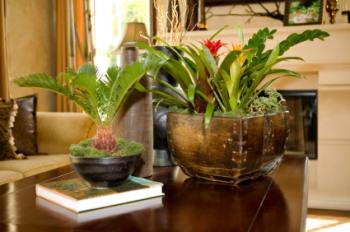
Despite its name, Sago Palm isn't really a palm but a cycad, a primitive plant originally from Japan.
You'll find Bromeliads nestled in the tall trees of the Central and South American rain forests.
And ZZ Plant is an East African native. It's essentially effortless and provides a dramatic upright form among a group of plants. I highly recommend adding it to your collection.
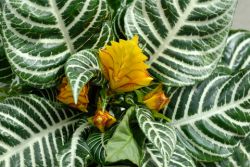
Like drama? Zebra Plant has outrageously bold striped foliage and, for 6 weeks in autumn, vibrant yellow flowers emerge from golden bracts for a scene-stealing performance.
In the wild it thrives in the regular downpours of the Brazilian rain forest. It will also do well indoors if the humidity is high.
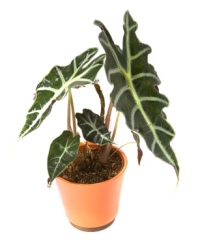
A native of tropical Asia, Elephant's Ear has daringly bold foliage that commands attention in any group of exotic indoor plants.
Its silvery-green, deeply scalloped leaves are exquisite, dramatically patterned with white veins.
It can be challenging, prefering the high humidity of its natural habitat to the dry air of many homes. However, there are some easy ways to add humidity for your house plants.
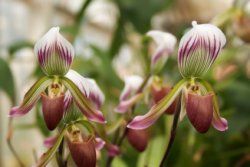
I just can't get enough of orchids, and Lady's Slipper Orchid is no exception. A ground-dweller from Southeast Asia, its blossoms range from soft pinks to daring color combinations.
This is the only terrestrial orchid that is easy to grow indoors, providing you give it the high humidity it craves.
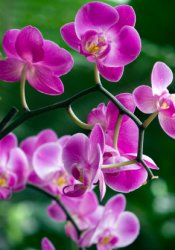
Moth Orchids are epiphytes (plants that grow on other plants).
Moth orchids are so well-adapted to their aerial lifestyle that when you plant them in a pot, their thick roots often climb out of the potting mix. Perhaps they're searching for a nearby tree branch.
Although orchids seem more exotic and mysterious than other flowering house plants, this one is just as easy to grow and is often called the beginner's orchid.
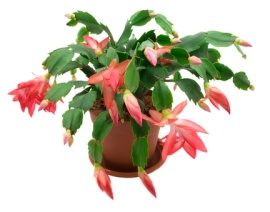
Crab Cactus comes from the tropical forest in Brazil where it makes its home on trees.
Its name comes from the deeply indented edges of the stems that look like crab claws. It bears big, beautiful flowers in the fall, which may be red, pink, white, or bicolored.
Crab Cactus (Schlumbergera truncata) is the parent of many hybrid schlumbergeras. I think it is the most captivating.
Copyright © www.100flowers.win Botanic Garden All Rights Reserved